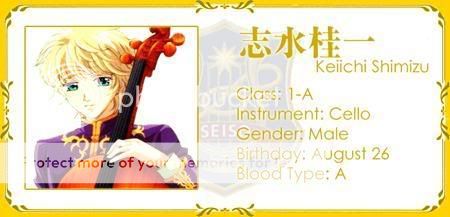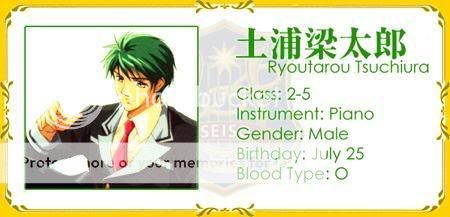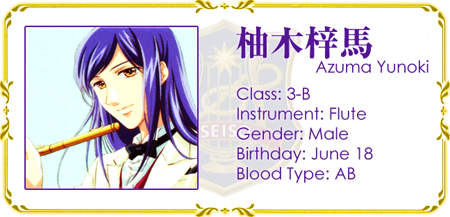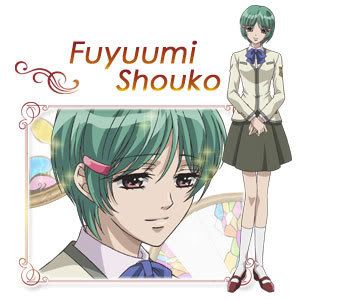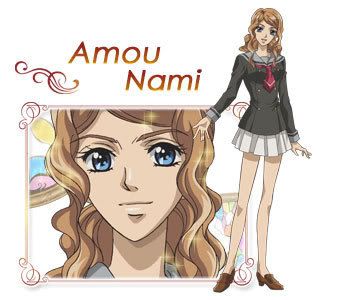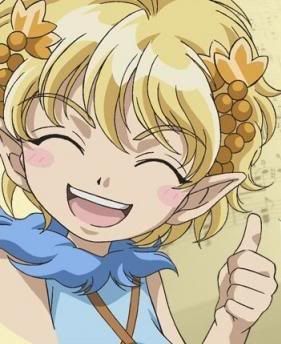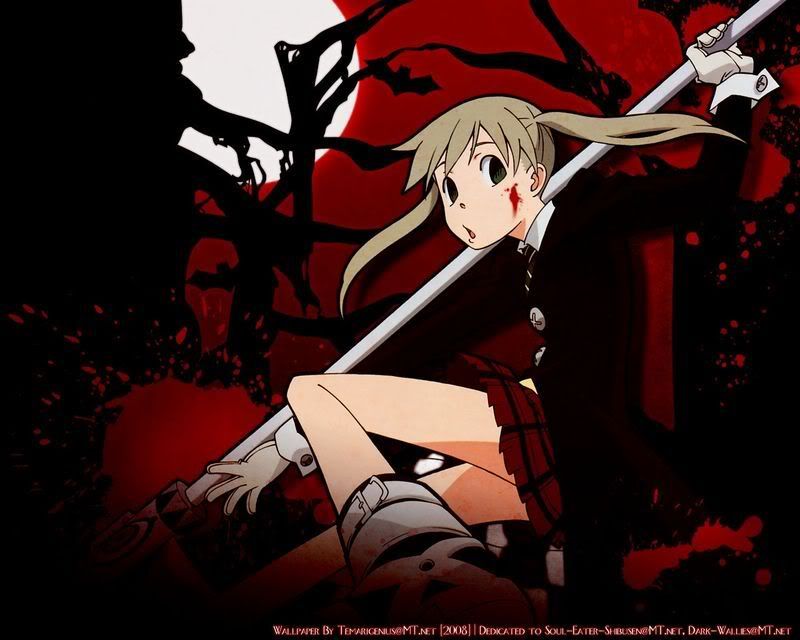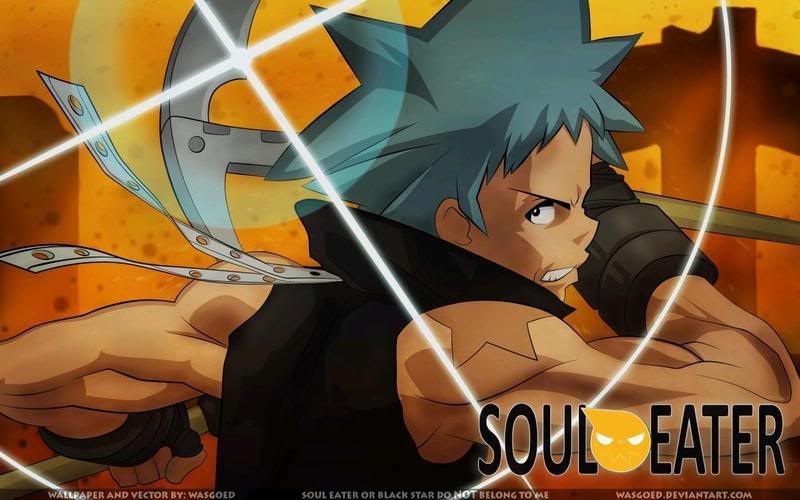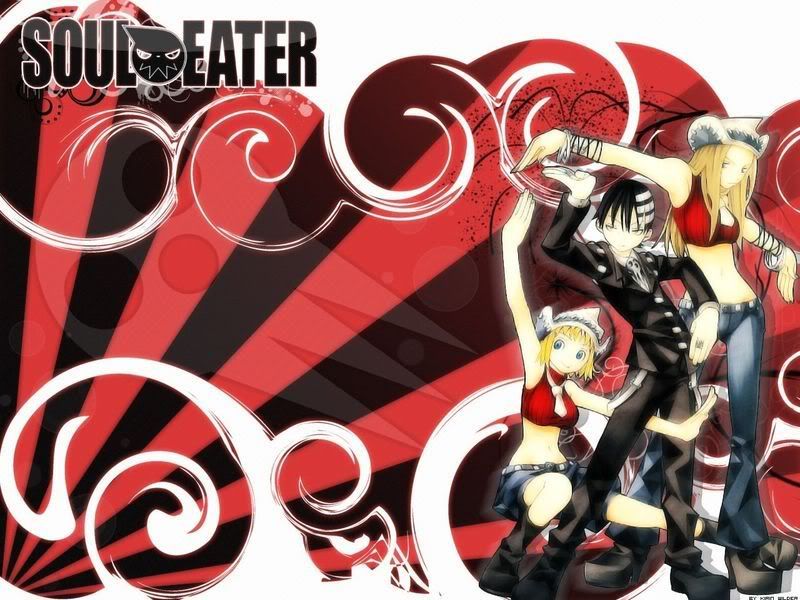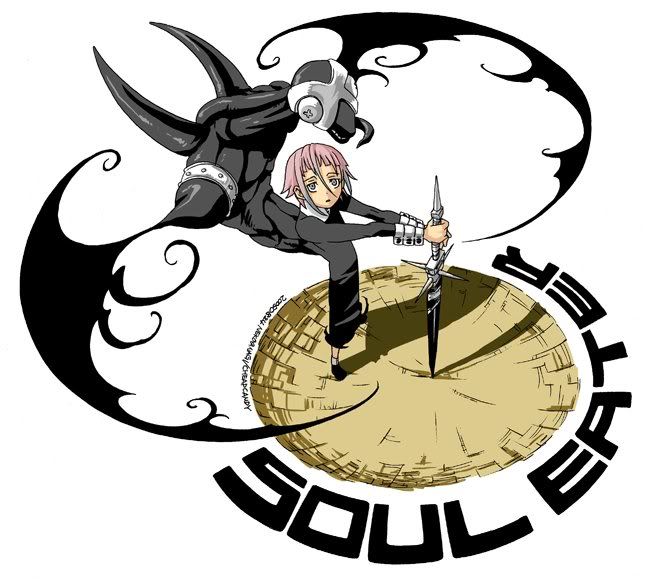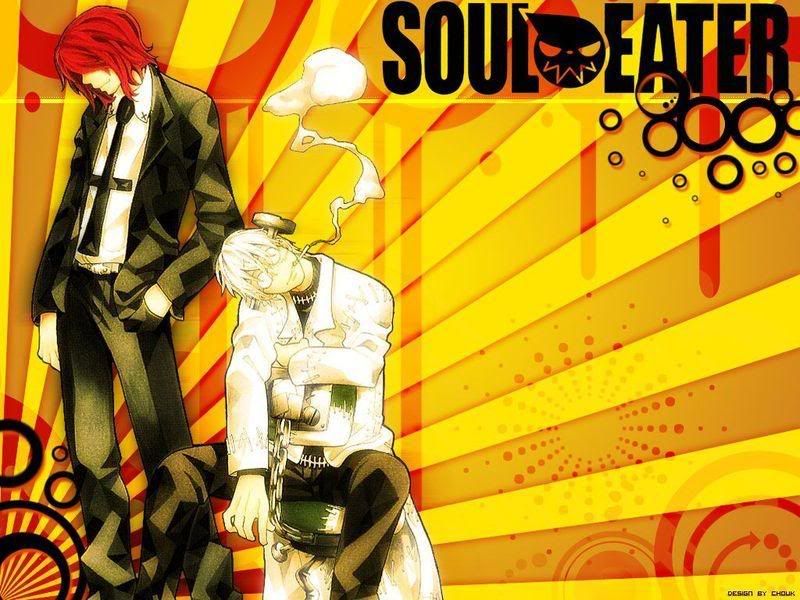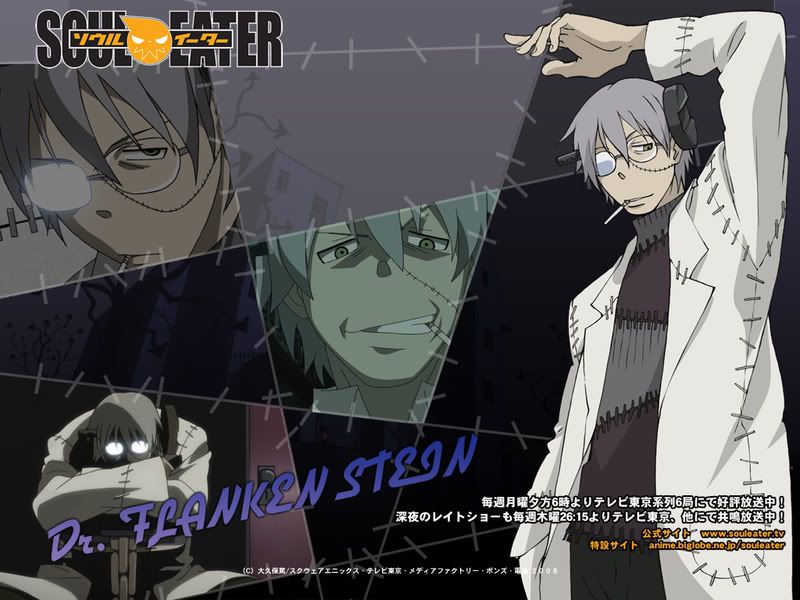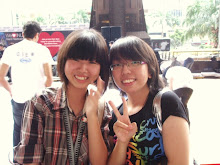 Takanori Nishikawa (西川 貴教 Nishikawa Takanori, born September 19, 1970 in Yasu, Shiga Prefecture, Japan) is a Japanese singer and actor. He performs as T.M.Revolution (TMR), which stands for Takanori Makes Revolution (貴教が革命を起こす Takanori ga kakumei o okosu) although the name stems from the famous 80s J-Pop electronic band TM Network. Despite most of his songs being written by Akio Inoue and composed/arranged by Daisuke Asakura (also TMR’s former producer), T.M.Revolution is considered Nishikawa’s solo project.
Takanori Nishikawa (西川 貴教 Nishikawa Takanori, born September 19, 1970 in Yasu, Shiga Prefecture, Japan) is a Japanese singer and actor. He performs as T.M.Revolution (TMR), which stands for Takanori Makes Revolution (貴教が革命を起こす Takanori ga kakumei o okosu) although the name stems from the famous 80s J-Pop electronic band TM Network. Despite most of his songs being written by Akio Inoue and composed/arranged by Daisuke Asakura (also TMR’s former producer), T.M.Revolution is considered Nishikawa’s solo project. Nishikawa debuted as TMR with the release of his first single Dokusai -monopolize- (独裁 -monopolize- ) in May 1996. Later that year, his third single Heart of Sword ~Yoake Mae~ (HEART OF SWORD ~夜明け前~ ) was used as the third ending song for the anime series Rurouni Kenshin, further expanding his fan base. He also contributed six songs to the Mobile Suit Gundam SEED franchise – three for Gundam SEED and three for Gundam SEED Destiny. Nishikawa has guest starred as a minor character in each of those anime series that featured his songs.
T.M.Revolution is the first artist to be signed to Tofu Records, a record label (affiliated with Sony Music Japan) promoting j-pop artists in North America. Tofu released three of his most recent studio albums: coordinate (2003), Seventh Heaven (2004), and vertical infinity (2005). Nishikawa made his North American live debut at Otakon, a large anime convention in 2003. He has also performed at Pacific Media Expo in 2004 and at the New York Comic Con in 2008.
Biography
Early life
Nishikawa was born to a government worker (father, Yasuhiro) and a dentist (mother, Kazuko).[1] He attended Mikami Elementary School (三上小学校 Mikami Shōgakkō) as a child. Nishikawa was close to his grandfather (a retired policeman), whom he visited every day after school, since his parents were always working. Under the encouragement of his grandfather, Takanori studied kendo until age ten, when his grandfather passed away due to illness.[3]
Nishikawa also attended Yasu Junior High School (野洲中学校 Yasu Chūgakkō)and Yasu High School (滋賀県立野洲高等学校 Shiga Kenritsu Yasu Kōtō Gakkō). While in junior high, Takanori began to consider a career in music.[6] He dropped out of high school and left Shiga to pursue his dream. Takanori was also married to Yumi Yoshimura of Puffy AmiYumi from 1999 to 2002. He divorced her after finding out that she was meeting someone else.[citation needed]
Luis-Mary
Nishikawa joined a visual kei band Luis-Mary in 1990 as the vocalist. His band nickname Haine (灰猫 ) and his appearance at the time would eventually become the inspiration for Nishikawa’s character in Gundam SEED Destiny (Heine Westenfluss). Luis-Mary released three singles, Rainy Blue, Whisper(in your eyes), and Drive me mad. The band broke up in 1993.
Debut as T.M.Revolution
In 1995, Daisuke Asakura signed on with Nishikawa under the FunHouse label, now owned by BMG Japan. They released one single, Black or White?, under the name Daisuke Asakura expd. Takanori Nishikawa.[7] This song was rerecorded in 1997 and also rearranged in 2000 as TMR’s twelfth single (Black or White? version 3). The original “Black or White?” song also appears as the third track on TMR’s first album Makes Revolution (1996). Nishikawa participated in a mini three-band event in November 1995. His fan club, turbo, was established shortly afterwards, in December 1995. In early 1996, Nishikawa made several radio appearances announcing the debut of his solo project. On March 22, 1996, the project was given the name T.M.Revolution, with Asakura named as TMR’s producer.[8]
Makes Revolution era
Dokusai -monopolize- was released on May 13, 1996 under the Antinos Records label. It reached #28 on the Oricon charts. Nishikawa’s performance on NHK’s music variety show Pop Jam (which he would, later in his career, cohost for eleven months) helped boost sales, eventually selling out all first press copies of the single. His second single, Hesoshukujo -Venus- (臍淑女 -ヴィーナス- ) was released two months later, followed by the release of TMR’s first album Makes Revolution another month later.
Restoration LEVEL➝3 era
Heart of Sword ~Yoake Mae~ was released in November 1996 and was used as the third ending song for Rurouni Kenshin. It later replaced “The Fourth Avenue Cafe” (by rock band L'Arc~en~Ciel) as the fourth ending song, due to drug charges laid against a (now former) member of that band at the time. “Heart of Sword ~Yoake Mae~” became a fan favourite that sold 360,000 copies and reached #16 on the Oricon charts. Nishikawa’s second album, restoration LEVEL➝3 [sometimes called Ishin Level➝3 (維新レベル➝3 )] was released in February 1997, which reached #5 on the Oricon charts.
Triple joker era
Nishikawa released three singles, Level 4, High Pressure, and White Breath, in 1997. High Pressure became TMR’s breakthrough single, selling 800,000 copies. White Breath sold over one million copies and became the first TMR single to reach #1 on the Oricon charts. Nishikawa performed White Breath on the 48th edition of Kōhaku Uta Gassen, an annual music show televised by NHK. Less than a month later, his third album triple joker was released and went on to sell two million copies. Aoi Hekireki (蒼い霹靂 Blue Lightning), the first track from triple joker, was recut as a single in February 1998 and it was used in a Yamaha JOG commercial.[8] Nishikawa’s three albums were also released in other parts of Asia, and he visited Taiwan in April 1998 to promote triple joker.
The force era
Hot Limit, released in June 1998, sold 900,000 copies and became Nishikawa’s second #1 single. Nishikawa also performed at the 49th edition of Kōhaku Uta Gassen. His fourth album, the force, was released in March 1999 and featured album mixes of the four singles (Hot Limit, Thunderbird, Burnin’ X’mas, Wild Rush) that followed Aoi Hekireki. Shortly after the force was released, Nishikawa performed two concerts at Tokyo Dome to a total audience of 100,000.
the end of genesis T.M.Revolution turbo type D
In 1999, Nishikawa announced the end of T.M.Revolution.[8] He and Daisuke Asakura went on to form the end of genesis T.M.R.evolution turbo type D (or TMR-e, for short). The name implied it was an “evolution” of TMR. Asakura also appeared in their music videos and performed alongside Nishikawa. Three singles were released under that name, all in 1999: Kagerō (陽炎 -KAGEROH- ), Gekkō (月虹 -GEKKOH- ), and Setsugen -winter dust- (雪幻 -winter dust- ). Their only album, Suite Season, was released in February 2000. Nishikawa and Asakura started becoming more distant from each other, and Nishikawa reverted back to his original stage name in April 2000.
progress era
BLACK OR WHITE? version 3, a self-cover, was released in April 2000. It was used as a professional baseball theme song on Nippon Television.[8] Two other singles [HEAT CAPACITY and Madan ~Der Freischütz~ (魔弾 ~Der Freischütz~ )], a remix album (DISCORdanza: Try My Remix ~Single Collections~), and studio album (progress; TMR’s fifth) were also released in 2000.
Coordinate era
Boarding was released in February 2001. The title track of the single was used as a theme song to a drama called To Make Divided a House (別れさせ屋 Wakaresase Ya).[8] Nishikawa started self-producing, with the release of his sixteenth single (Out of Orbit ~Triple ZERO~) one year later. (Asakura continued to compose music for TMR.) His compilation album B☆E☆S☆T was released the next month. Epic Records Japan purchased Antinos Records that year, and all albums on the Antinos catalogue were re-released under the Epic label on July 1, 2002. “Thunderbird” inspired anime director Mitsuo Fukuda to ask Nishikawa to perform the first opening song for Gundam SEED (“Invoke”). Invoke, released in September 2002, sold 250,000 copies and reached #2 on the Oricon charts. Nishikawa also voice acted as Miguel Aiman early in that series and narrated a recap episode of Gundam SEED.
coordinate, his sixth original album, was released in March 2003. The cover was a closeup of the customized orange GINN that Nishikawa’s Gundam SEED character piloted. (Orange is Nishikawa’s favourite colour.[9]) “Meteor” (Meteor -ミーティア- ), an album track from coordinate, was used as an insert song to Gundam SEED. The album mix of “THUNDERBIRD”, originally from the force, was also included on this album. Later that year, Nishikawa became the first artist to be signed under Tofu Records, and coordinate was the first album released by Tofu. The Tofu release of coordinate also included “HEART OF SWORD ~Yoake Mae~” as a bonus track. Nishikawa made his debut North American performance at Otakon in August 2003, to a massive audience who filled both the ballroom and overflow room (an exhibition hall) of the Baltimore Convention Center to their entirety.
SEVENTH HEAVEN era
Nishikawa released his eighteenth single, Albireo (Albireo -アルビレオ- ), in February 2004. (Albireo is a bright star from the constellation Cygnus.) “Albireo” was used in a music variety show on Nippon Television called AX MUSIC-TV, where it was #49 on the show’s “power play” list.[10] SEVENTH HEAVEN, his aptly named seventh album, was released in March 2004. Tofu Records released SEVENTH HEAVEN a few weeks later and Nishikawa performed at Pacific Media Expo in May 2004. “Zips”, a track from SEVENTH HEAVEN, was used as an insert song for the first Mobile Suit Gundam SEED: Special Edition movie. “Wheel of Fortune” was used as a Formula Nippon theme song on Fuji Television.[10]
vertical infinity era
Nishikawa was asked to sing the ending theme song of the Japanese theatrical release of Spider-Man 2 (“Web of Night”), because of his performance at PMX 2004 and his relations at Sony Music Japan. Web of Night, released in late July 2004, also included a rearrangement of “Tears Macerate Reason” (originally from Seventh Heaven) and an English version of the song (translated by Lynne Hobday). Nishikawa shot the “Web of Night” PV in both languages. He also attended the world premiere of Spider-Man 2 wearing a traditional Japanese kimono.[11]
“ignited” (ignited -イグナイテッド- ) was used as the first opening song of Gundam SEED Destiny, which premiered in October 2004. The release of the ignited single was originally scheduled for October 27, but its release date was pushed back to November 3 for unknown reasons.[citation needed] ignited was the first TMR single to reach #1 on the Oricon charts since 1998, becoming the 900th #1 single in the Oricon chart. It was #53 on the 2004 Oricon Top 100 Singles chart, having sold 161,324 copies.
Nishikawa also voice acted as Heine Westenfluss for several episodes of Gundam SEED Destiny. His character was directly modelled after Nishikawa himself, as opposed to SEED’s Miguel Aiman. Heine’s hairstyle resembled Nishikawa’s Luis-Mary hairstyle, and his name was a play on Nishikawa’s pseudonym with that band (Haine). [Heine’s first name is written as Haine (ハイネ ) in katakana.] The surnames of both Nishikawa and Westenfluss mean “west river” in Japanese (西川) and German (Westenfluß), respectively. Interestingly, ignited’s title is closely similar to the mobile suit (GOUF Ignited) that Nishikawa’s GSD character piloted.
vertical infinity was released on January 26, 2005 by Epic and exactly six months later by Tofu Records. The infinity symbol (∞), when facing vertically or turned sideways, looks like the number 8. That is also the number of original studio albums Nishikawa has released to date as T.M.Revolution. vertical infinity included album mixes of “Web of Night” (both Japanese and English versions) and “ignited”. It also included two English-language tracks, “Bring It On” (written by Nishikawa) and “Chase / The Thrill” (written by Hobday). “Chase / The Thrill” was used as the Japanese theme song of the X Games.[12][verification needed]}} vertical infinity marked a significant change in T.M.Revolution’s musical style, as only half of the album was arranged by Daisuke Asakura, while Nishikawa arranged or co-arranged the other tracks.
UNDER:COVER era
With preparations for T.M.Revolution’s tenth anniversary in May 2006 and other commitments, Nishikawa was unable to visit North America in 2005. In April 2005, he began cohosting NHK’s music variety show Pop Jam with NHK Broadcasting Center announcer Yuriko Murakami (村上 由利子 ) and comedy duo UN JASH (アンジャッシュ Anjasshu). Nishikawa’s twenty-first single, vestige (vestige -ヴェスティージ- ), was released in August 2005. It was his fourth single, and second consecutive, to reach #1 on the Oricon charts. “vestige” was used as an insert song for Gundam SEED Destiny. “crosswise”, the other track, was used as the theme song for PlayStation 2 game Sengoku BASARA. vestige was #54 on the 2005 Oricon Top 100 Singles chart, with 176,028 copies sold that year.
The vestige single came with a unique password that was used to vote online (on T.M.Revolution’s official website) for which songs would appear on an upcoming self-cover album. These songs would be rearranged and re-recorded. Ten songs were originally planned for this album, but due to the overwhelming amount of votes, fifteen tracks were recorded instead.[13] The “self-cover best album”, titled UNDER:COVER, was released on January 1, 2006 and was ranked #8 on the Oricon charts. UNDER:COVER came in two editions, limited (or first press) and regular. The regular edition contained fourteen tracks. The limited edition came with fourteen tracks, a bonus track on a separate disc (instrumental version of “Meteor”, Daisuke Asakura’s only contribution to the album), and a poster (which listed the names of all the people who selected the tracks). The rearrangement of “Zips” was used as an insert song to the first Mobile Suit Gundam SEED Destiny: Special Edition movie.
Nishikawa performed the UNDER:COVER mix of “WHITE BREATH” at the 56th edition of Kōhaku Uta Gassen, his third appearance and his first since 1998. His cohosting duties on Pop Jam came to an end in March 2006. His tenth anniversary celebration was held at Universal Studios Japan in Osaka on May 13, 2006. That day, it was announced that Nishikawa will perform at USJ, near Peter Pan’s Neverland, on his 36th birthday on September 19, 2006.[14] His second compilation album, 1000000000000 (a one followed by 12 zeroes), was released on June 7, 2006. It was a two disc set that contained the A-sides of all twenty-one singles released to date, and was ranked #1 on the Oricon charts. The corresponding DVD, released three weeks later, contained all twenty-four TMR PVs made. Nishikawa has also stared in a drama called Nursing Étoile in autumn 2006.[15]
Abingdon boys school era
Nishikawa has done work with his side-band, Abingdon Boys School. Ex-Wands guitarist Hiroshi Shibasaki joined the band. On December 6, 2006, they released a single, entitled "INNOCENT SORROW," and released another single entitled "HOWLING" on May 15, 2007. The band also performed at the Live Earth concert in Tokyo, Japan, on July 7, 2007. The band also released two more singles, Nephilim and BLADE CHORD, as well as their debut album, abingdon boys school.
Current and future events
Nishikawa held the Real Time Countdown Party Revolution, a live concert he did with all of his fans on New Year's Eve, to make up for the lack of new T.M. Revolution material. Although in a recent magazine interview, Nishikawa has stated that he will make a comeback in 2008 as T.M. Revolution. His first new single, 'Resonance', which features all his past famous hit song music videos and promotes Sony products in its Music Video, is the Anime theme song for the anime Soul Eater and was released on the 11th of June. Resonance reached #4 on Oricon Singles Chart on its release day. "Soul´s Crossing", the B-side of the "Resonance" single, was used as the theme song for the Soul Eater video game for the Wii console.
T.M.Revolution took part in the "Hide Anniversary Summit", a music festival to honor the tenth anniversary of the death of X Japan guitarist Hideto Matsumoto.[16]
At the New York Anime Festical 2008, and official TMR and ABS panel hinted at some 'surprise projects' involving Nishikawa. But no news on a new album.
And on 23 March T.M.Revolution will release a Memorial Box featuring the songs from his debut single, Dokusai monopolize through eleventh single, WILD RUSH. These singles were originally released on 8 cm minidiscs but will now be in high-fidelity Blu-spec CD format (fully compatible with standard CD players). The box will also contain a bonus DVD from his T.M.R. YEAR COUNTDOWN LIVE, a photo book and logo sticker set. The box's price is 17 800 yen, but the singles will also be sold separately.
International market
Nishikawa was the guest of honor at Comic Con 2008 in New York.[17]
In early 2008, Nishikawa starred in the movie Corazon de Melon. Through a user-submitted voting system, this film won the .[18] It is premiering at NYU's Cantor Film Center in New York City on September 28, 2008 as part of the film festival.
Other activities
Takanori Nishikawa’s All Night Nippon
“Takanori Nishikawa’s All Night Nippon” (西川貴教のオールナイトニッポン Nishikawa Takanori no Ōru Naito Nippon) was a radio show Nishikawa hosted on All Night Nippon. Listeners, who were unable to meet him at his concerts, had a chance to talk to Nishikawa on air. Nishikawa’s radio show was broadcasted on Monday nights and ran for eight years and nine months, from January 6, 1997 to September 26, 2005. The show was called “Takanori Nishikawa’s All Night Nippon SUPER!” (西川貴教のallnightnippon SUPER! ) from April 1999 to March 2003. A two-hour television special with Masaharu Fukuyama, called Masaharu Fukuyama and Takanori Nishikawa’s All Night Nippon (福山雅治と西川貴教のオールナイトニッポンTV Fukuyama Masaharu to Nishikawa Takanori no Ōru Naito Nippon TV), was aired on September 30, 2001 on Fuji Television.
Diesel Corporation
Established on April 7, 1998, Diesel Corporation is a company run by Nishikawa. The company is responsible for artist management & promotion, operating Nishikawa’s fan club, and marketing the DEFRÖCK brand (see next section).
DEFRÖCK
Launched in 2001, DEFRÖCK is Nishikawa’s clothing line. The name comes from a play on words, most notably the near-phonetic indifference between “l” and “r” in Japanese. Cars, which Nishikawa likes, use a device called differential lock. Nishikawa’s favourite music genre is rock (although he does enjoy various kinds of music[19]). He took the first few syllables of “differential”, changed “lock” into “rock”, and combined the two together to form this name.[6] On a side note, in Gundam SEED, the DEFRÖCK label appears on Nishikawa’s character’s.
BABEL FISH
BABEL FISH, which opened in 2004, was a shop (in Shibuya) that sold DEFRÖCK clothes. It closed on July 31, 2006.[20]
abingdon boys school
Discography
Nishikawa has released 8 studio albums, 22 singles, 2 compilations, 1 remix album, and 1 “self-cover best” album as T.M.Revolution. He also recorded a cover of dance group TRF’s song “Silver and Gold dance”, from their 2006 album Lif-e-Motions.
the end of genesis T.M.R.evolution turbo type D released 1 album and 3 singles.
Filmography
- Rurouni Kenshin (1996) ➝ Orochi no Ren (大蛇の煉 )
- Little Shop of Horrors (1999) ➝ Seymour Krelborn (Japanese production)
- Beautiful Life (2000) ➝ Satoru Kawamura (川村サトル Kawamura Satoru)
- Mobile Suit Gundam SEED (2002/2003) ➝ Miguel Aiman / narrator (phase-26)
- Mobile Suit Gundam SEED Destiny (2005) ➝ Heine Westenfluss
- Nursing Étoile (介護エトワール Kaigo Etoile, 2006) ➝ Takeo Baba (馬場竹雄 Baba Takeo)
- Corazon de Melon (2008) ➝ Hiromi
Other media appearances
TV
- Kōhaku Uta Gassen (1997/1998/2005)
- Masaharu Fukuyama and Takanori Nishikawa’s All Night Nippon (2001)
- Pop Jam (2005/2006)
- Hey! Hey! Hey! (1997-2007)
Drama
- Beautiful Life (2000)
Film
- Corazon de Melon (2008)
Radio
- Liquid ROOM (January 17, 1996 / March 22, 1996)
- ON Air West (February 18, 1996)
- T.M.Radio Wave (April 5, 1996)
- Love Revolution (April 7, 1996)
- JRA Power Revolution (October 3, 1996)
- Takanori Nishikawa’s All Night Nippon (1997-2005)
Podcasts
- Geeknights with Rym and Scott (April 4, 2008 - Yet To Be Released)
Products
Photobooks
- Starman from Miracle Wonder Planet (1997)
- T.M.R. LIVE REVOLUTION ’97 -Joker- Documentary Tour Book (1997-98)
- T.M.Revolution PERFECT BIBLE Volume 3 (1998)
- Takanori Nishikawa B-Pass Special Edition PERFECT BIBLE Volume 4 (1998)
- T.M.R. LIVE REVOLUTION ’98 Joker Type 2 -Great Fighter- (1998)
- the end of genesis T.M.R.evolution turbo type D (1999)
- SEVENTH HEAVEN (2004)
- Ray of Light - DEFROCK (2005)
- UNDER:COVER (2006)
Hello Kitty keychains
Five Hello Kitty keychains were released as promotional items for TMR’s tenth anniversary in 2005. They are based on the costume used in the respective song’s PV.
-------------------------------------------------------------------------------------------------
簡歷
- 1989年:組成樂團Luis-Mary(擔任主唱。以「灰貓=haine」為藝名)
- 1991年:發表三張單曲以及三張專輯。
- 1993年:Luis-Mary解散。此後的2年,遠離了表演舞台。
- 1995年:與淺倉大介相遇。擔任淺倉大介個人單曲「BLACK OR WHITE?」(1995/05/25)的主音,以「淺倉大介 expd.西川貴教」名義出道,並且這首歌曲作為T.M.Revolution音樂活動的出道單曲。先以演唱會展開音樂活動。12月,設立歌迷俱樂部網站 「turbo」。
- 1996年:5月,以T.M.Revolution為名展開個人音樂活動。(T=Takanori貴教,M=Makes創造,R=革命:西川貴教創造音樂革命。)
- 1997年:開始『西川貴教的All Night Nippon』的個人廣播節目(1月6日~)。持續到2005年,總共8年9個月的廣播。12月,T.M.Revolution在紅白歌合戰首次出場(之後的1998年以及2005年也有)。
- 1999年:3月,在廣播節目中發表將T.M.Revolution之名封印,並與他的音樂製作人淺倉大介,展開the end of genesis T.M.R.evolution turbo type D(簡稱T.M.R-e)為名的兩人團體音樂活動。4月2日,與日本女子團體PUFFY(帕妃)的吉村由美結婚。
- 2000年:從T.M.R-e改回T.M.Revolution之名,並再度展開音樂活動。
- 2001年:自創服裝品牌DEFROCK。
- 2002年:2月,展開T.M.Revolution個人音樂活動。7月1日,與吉村由美離婚。
- 2004年:讓代官山開放主要經辦DEFROCK的商品的精品店BABEL FISH。
- 2005年:組成搖滾樂團abingdon boys school,以本名擔任主唱。
- 2006年:在1月2日,僅限一夜的『西川貴教的All Night Nippon』復活。6月,T.M.Revolution的歷往21首單曲紀念合集《1000000000000》發售.七月末,DEFROCK・ BABEL FISH事業凍結。12月6日,abingdon boys school有較多的曝光,同時成立正式的歌迷俱樂部網站A.B.S.F.C.。
- 2008年:接拍電影《科拉松的哈密瓜》,担當男主角.6月,單曲《Resonance》發售,此單曲為TV動畫噬魂者的主題曲.
活動
電視劇、綜藝節目
- NHK紅白歌合戰(1997年、1998年、2005年以T.M.Revolution出場)
- Beautiful Life(美麗人生)(2000年1月-3月 飾演:川村 悟)星期日21:00 - 21:54(TBS系)
- 福山雅治和西川貴教的All Night NipponTV(2001年9月30日)19:00 - 20:54(富士電視台系)
- POP Jam(2005年4月 - 2006年3月 擔任主持人)星期五24:15 - 24:55(NHK)
電影
- Corazon de Melon(2008年)首次担任男主角
動畫
- 浪客劍心~明治劍客浪漫譚~(第86集:真田三人眾之ㄧ:大蛇之煉)
- 機動戰士鋼彈SEED(米蓋爾·艾曼)
- 機動戰士鋼彈SEED DESTINY(海涅·魏斯特費魯斯
- Soul Eater
電玩
- 機動戰士鋼彈SEED 朝向不會終結的明日(米蓋爾·艾曼)
- 機動戰士鋼彈SEED 聯合vs.Z.A.F.T.(米蓋爾·艾曼)
- 機動戰士鋼彈SEED DESTINY~GENERATION of C.E.~(米蓋爾·艾曼/海涅·魏斯特費魯斯)
- 機動戰士鋼彈SEED DESTINY 聯合vs.Z.A.F.T.II(米蓋爾·艾曼/海涅·魏斯特費魯斯)
廣播節目
- JRA Power Revolution(1996年、bayfm系)
- Love Revolution(1996年、bayfm系)
- T.M.Radio Wave(1996年、FM NORTH WAVE)
- 西川貴教的all night nippon (1997年1月6日 - 1999年3月《從1997年10月4日到1998年3月23日為止是星期五25:00-29:00,後改為T.M.Revolution西川貴教的 all night nippon Music Revolution》、2003年4月 - 2005年9月26日、2006年1月2日)月25:00 - 27:00(日本放送系)
- 西川貴教的allnightnippon SUPER! (1999年4月 - 2003年3月)星期二22:00 - 24:00(日本放送系)
- turbo FM(1999年 - 2000年、JFN系)
- ゴチャ・まぜっ!星期四(2008年4月10日 -)
CD廣播劇
- 機動戰士鋼彈SEED SUIT CD Vol.4 Miguel Ayman×Nicol Amarfi(2003年6月21日)
廣告
- YAMAHA·JOG(山葉機車)
- Tisera Jungle Jungle(資生堂)
雜誌連載
- 荒暴的國家統一俱音樂部(CDでーた)
- 西川貴教身旁的草坪(Oricon·entertainment)
書籍
- 以T.M.Revolution名義發行的書籍
在這個聲音的對面 第一次被談到的西川貴教的半生-魂的記憶T.M.Revolution interview book,出版社名:シンコー・ミュージック,發行日:1999年1月
- 以西川貴教名義發行的書籍
- 疾駛(T.M.R.)(T.M.R-e)T.M.Revolution~the end of genesis T.M.R.evolution turbo type D ,角川書店,1999年7月
- 西川貴教身旁的草坪,Oricon·entertainment,2004年3月
- UNDER:COVER T.M.Revolution the 10th debut anniversary book,アスコム,2006年1月1日(以T.M.Revolution名義的同名專輯UNDER:COVER同時發行)
發行的作品
- 單獨表演項目(solo project):「T.M.Revolution」、
- 過去組成的視覺系樂團:「Luis-Mary」、
- 搖滾樂隊「abingdon boys school」三項的音樂發表作品。
單曲
- 1995年5月25日「BLACK OR WHITE?」淺倉大介expd.西川貴教
專輯
- 「THE MODS TRIBUTE-SO WHAT!!-」內的「Just Say Fuck No」西川貴教(2001年4月11日)
DVD
- T.M.Revolution 西川貴教·站起!! 屋久島·繩文杉(2004年4月10日)
※T.M.R.LIVE REVOLUTION '04 SEVENTH HEAVEN的周邊商品同時販售。
- T.M.Revolution 西川貴教·站起!!ボルネオ ‐世界のヘソを目指して‐(2005年12月10日)
※T.M.R.YEAR COUNT DOWN PARTY LIVE REVOLUTION REMIX IX的周邊商品同時販售。
- T.M.Revolution 西川貴教・站起!! Vol.3 -激跑!!縱貫Thailand-(2006年12月3日)
※T.M.R.YEAR COUNT DOWN PARTY LIVE REVOLUTION REMIX X的周邊商品同時販售。
※全部都已絕版。






